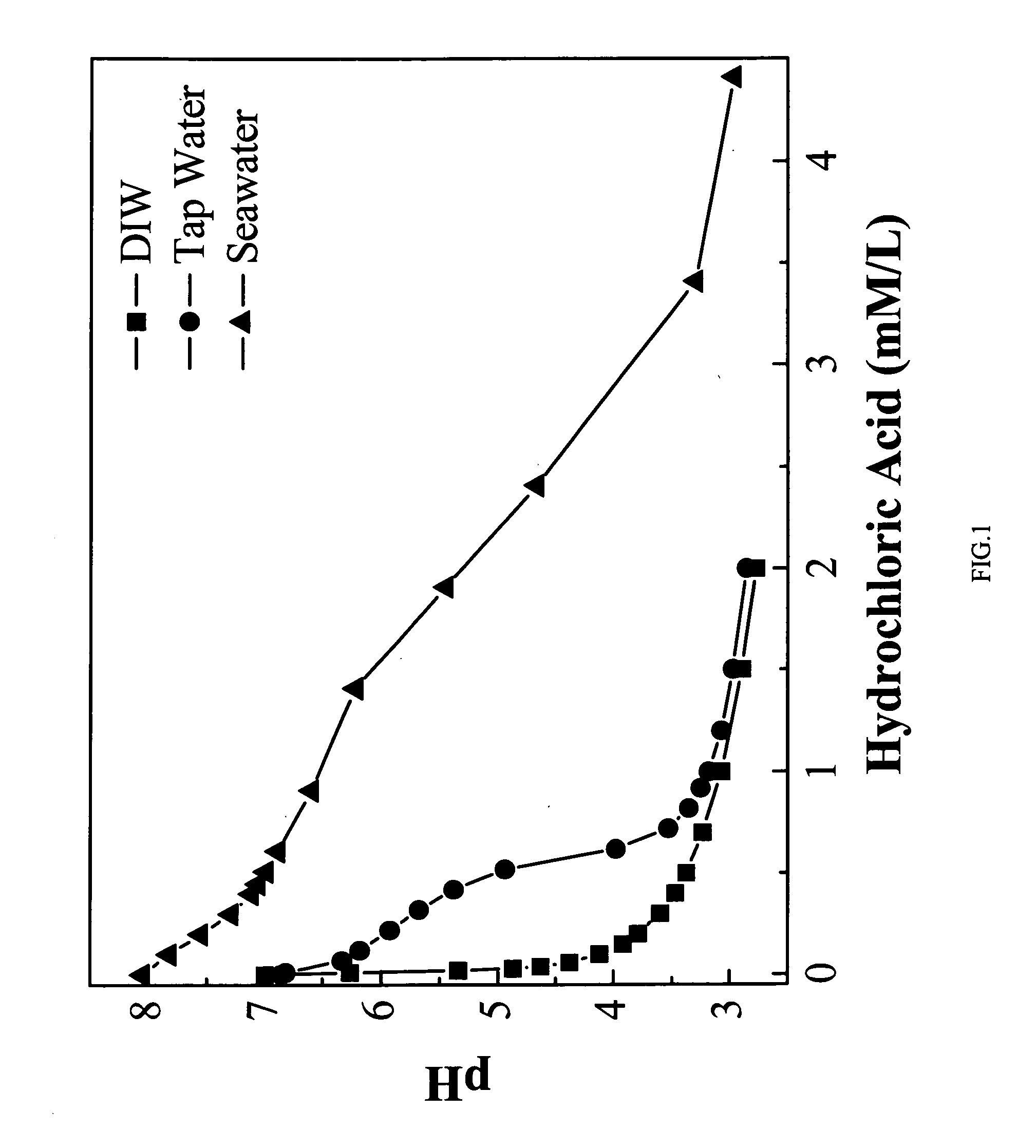Sterilization effects of acidic ozone water
- Summary
- Abstract
- Description
- Claims
- Application Information
AI Technical Summary
Benefits of technology
Problems solved by technology
Method used
Image
Examples
example 1
[0031]The focus of the sterilization study is mostly on the decontamination of bacterial endospores because they are recognized to be the most difficult microorganisms to kill. The decontamination experiment of the bacterial endospores was carried out by using spores of Bacillus atrophaeus (B. Subtilis var. niger, ATCC 9372). In order to observe the influence of organic compounds on the ozone concentration and its kill properties, the original bacillus-spore suspension was made of a high concentration (40% by weight) of ethanol, which is harmless to spores. The spore concentration of the original spore suspension was 107˜108 spores per milliliter (mL). The spore treatment experiments were conducted by adding 0.1 mL of spore suspension with 10 mL of the acidic ozone water with three different pH value of 4, 5 and 7. The acidic ozone water in this example is made of a tap water supplied from a municipal water supply system. The ozone concentration in AOW was 20 mg / L. The concentration...
example 2
[0034]The sterilization of microbes in seawater was carried out by using the ozone and acid in the seawater. The spore concentration of the original spore suspension was 105˜106 spores per mL. The spore-treatment experiments were conducted by adding 0.2 mL of spore suspension to 10 mL of seawater at a specified pH value and ozone concentration of 5 mg / L. The concentration of ethanol in the mixture of 0.1 mL of spore suspension and 10 mL of seawater was 7.7 mM / L. Ozone in the water decayed rapidly with this ethanol concentration. For example, the ozone decay time τ in the seawater with its ethanol concentration of 7.7 mM / L was measured to be τ=22 s for pH=8, τ=40 s for pH=7, τ=70 s for pH=6 and τ=90 s for pH=5. One mL of the solution was obtained from each sample after 40 minutes of contact time and was diluted with 9 mL of distilled water. The contact time t=40 minutes is much longer than the ozone decay time τ less than 2 minute for the case of high concentration of ethanol. Equati...
PUM
 Login to View More
Login to View More Abstract
Description
Claims
Application Information
 Login to View More
Login to View More - R&D
- Intellectual Property
- Life Sciences
- Materials
- Tech Scout
- Unparalleled Data Quality
- Higher Quality Content
- 60% Fewer Hallucinations
Browse by: Latest US Patents, China's latest patents, Technical Efficacy Thesaurus, Application Domain, Technology Topic, Popular Technical Reports.
© 2025 PatSnap. All rights reserved.Legal|Privacy policy|Modern Slavery Act Transparency Statement|Sitemap|About US| Contact US: help@patsnap.com



